Colonial Values
Early American money – such as colonial, post-colonial and continental coins – was a much more chaotic affair than the system we have in place today. Many coins from this time period are very rare and expensive.
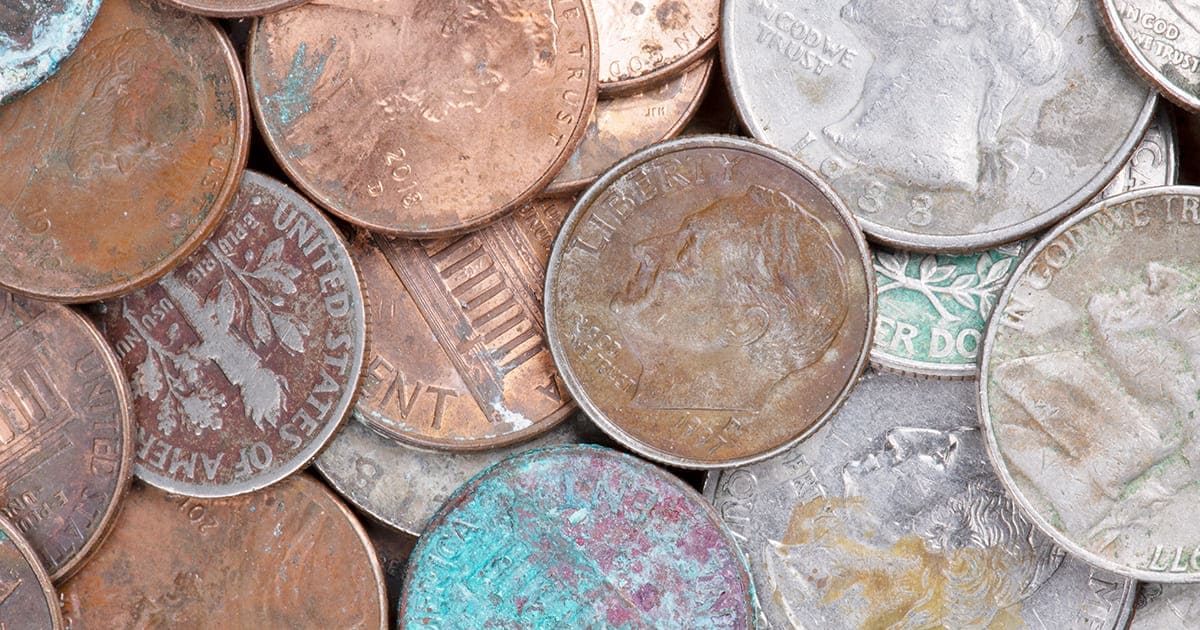
Rhode Island Ship Medals – 1778 – 1779
The medal commemorated the victory of Admiral Lord Richard Howe over American colonists in Rhode Island. During the summer of 1778, the American Major General
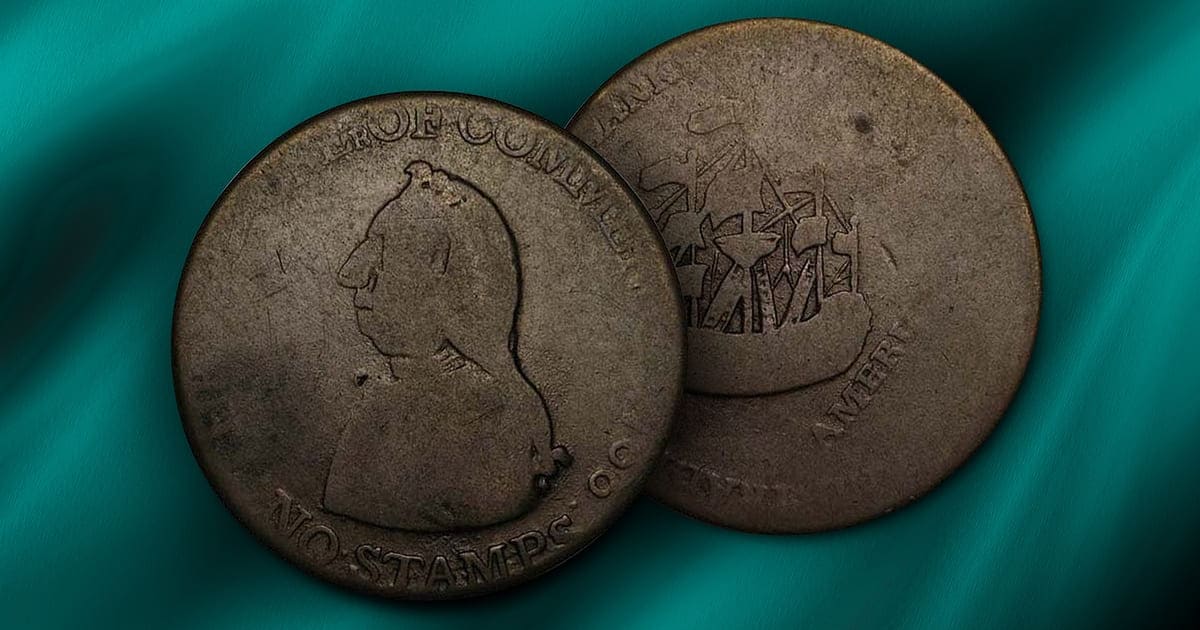
Pitt Tokens – 1766
In order to pay its troops for the costs of the French and Indian Wars, Parliament imposed stamp tariffs on the colonies on everything they

Nova Eborac – 1787
There are four major designs for the Nova Eborac coppers. All of these coins share an obverse portrait of a mailed bust wearing a laurel

Nova Constellatio Patterns – 1783
Since there was a lack of enthusiasm for these coins, they struck only one of each design, except that there are two of the same
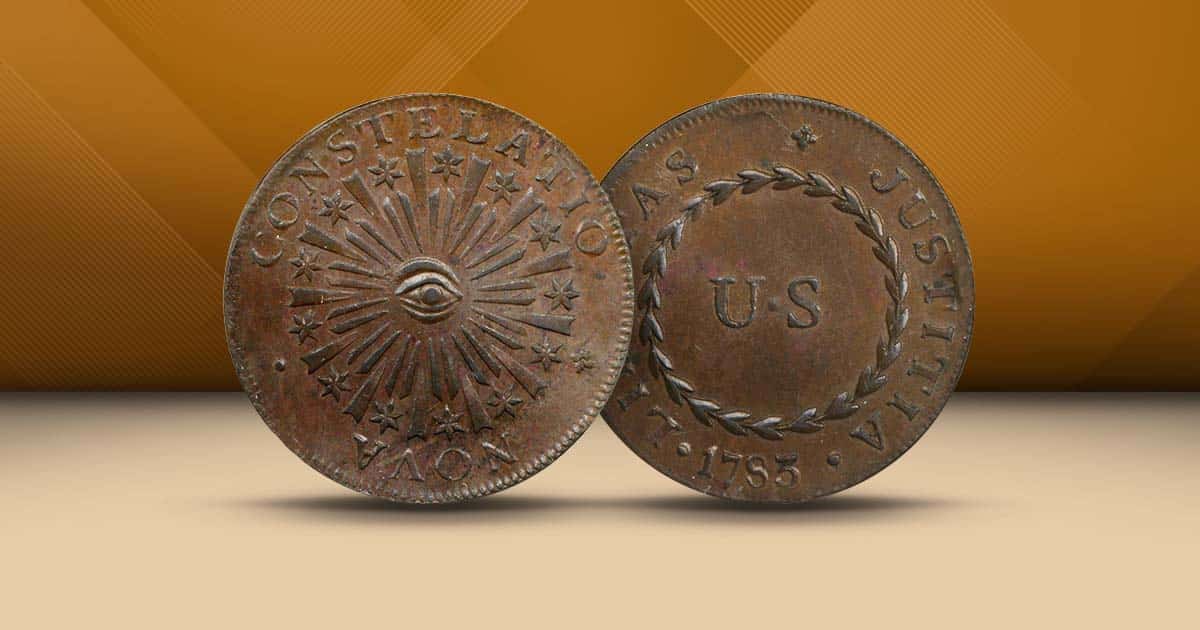
Nova Constellatio Coppers – 1783 – 1786
In 1783, Robert Morris employed a British engraver to create a set of American coins for national usage. The coins were silver patterns and were

North West Company Tokens – 1820
The majority of these tokens are holed for suspension, as they were worn around the hunter or trapper’s neck for safekeeping. They were also worn,
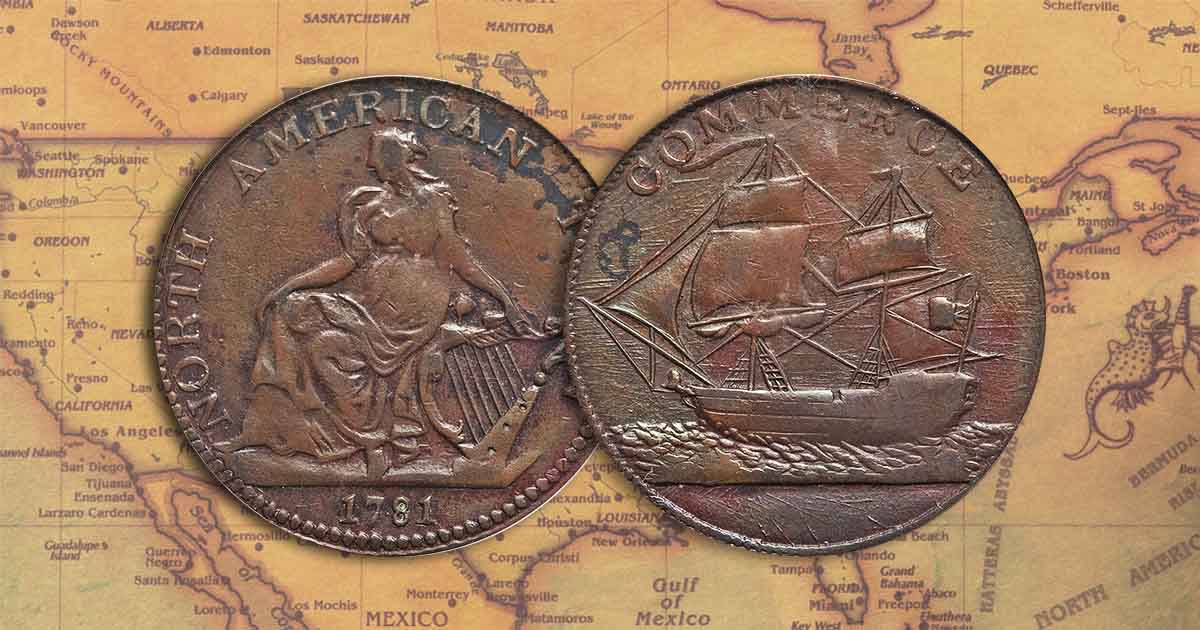
North American Token – 1781
The North American Token of 1781 is like a number of colonial coins. It is a mystery as to who struck these tokens and why.

New Yorke in America Token
The “New Yorke in America” undated colonial coin is a Farthing or Halfpenny intended for use in the New York colony. This token was issued

New York Copper Coinage – 1786 – 1787
New York Copper coins are some of the rarest and most desirable of all colonials. The pattern coins and privately-minted New York coins are more
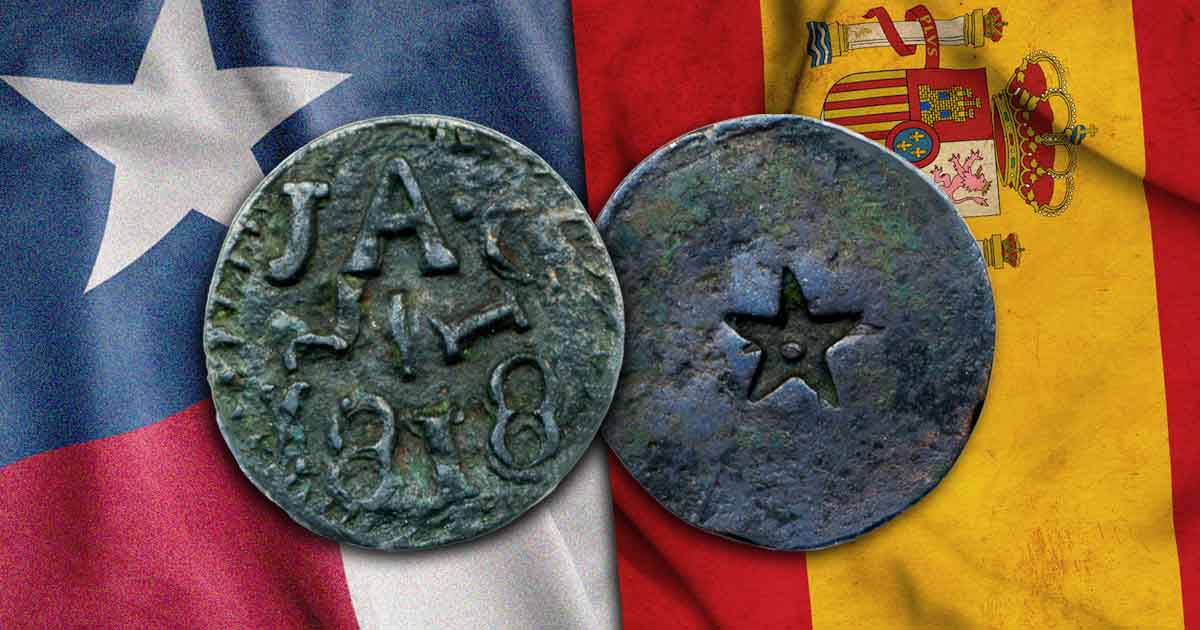
New Spain (Texas) Jola Tokens – 1817 – 1818
Manuel Pardo was the Spanish Governor of New Spain and after pleading with the Mexican Government hierarchy, he received permission to produce a total of

New Hampshire Coinage – 1776
New Hampshire patriots grew tired of using British coinage. On March 13th, 1776, a joint committee of the New Hampshire legislature looked at the possibility

New England Elephant Token – 1694
Much like the Carolina Elephant Halfpenny Tokens which were struck in 1694, the New England Elephant tokens have another mysterious past. No one knows for
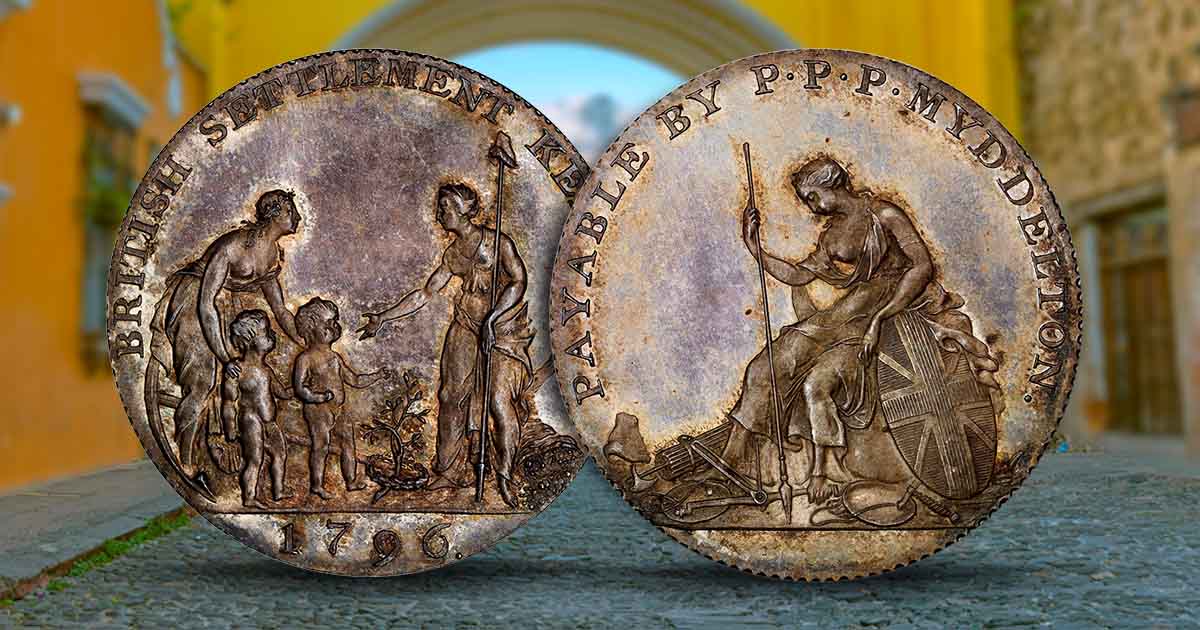
Myddleton Tokens – 1796
It is unknown how many copper specimens were struck or survived. Perhaps two dozen examples of all three types of Myddleton Tokens do exist. The

Mott Tokens – 1789
While it is dated 1789 (the year of George Washington’s inauguration), it is believed to have been struck as late as 1807. It is actually

Massachusetts Unofficial Coppers – 1776
No one knows the exact origin of these pieces and whether these coins were struck as patterns, for review, comment and later striking. We will
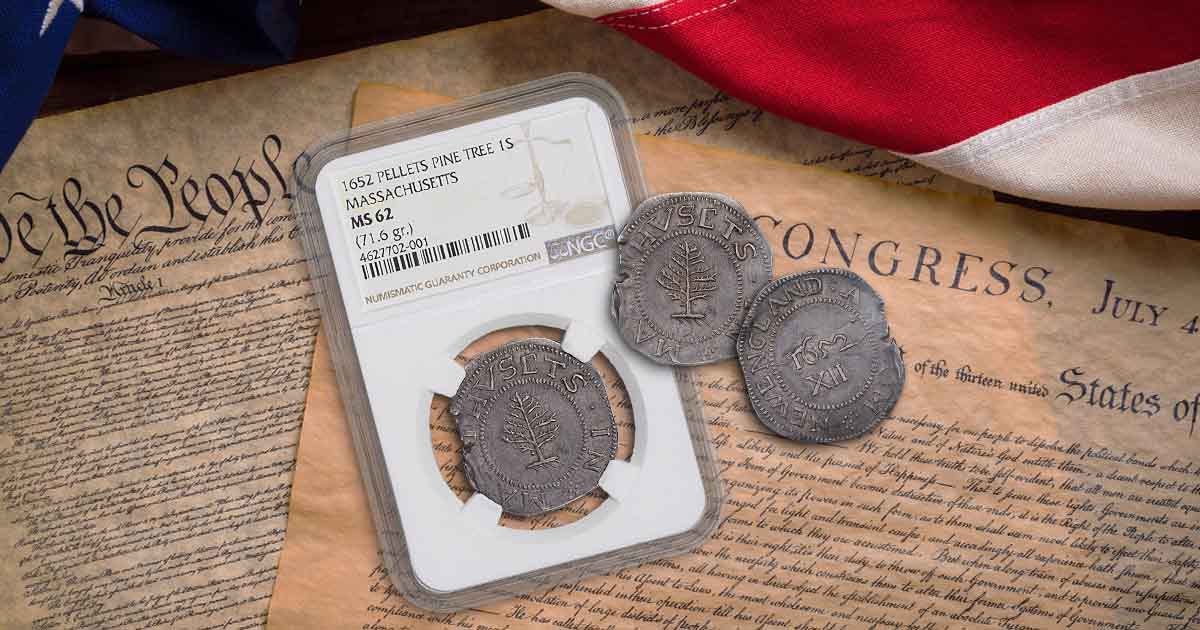
Massachusetts Silver Coinage – 1652
The coinage was struck without dates and is the essence of simplicity. The mint struck three different denominations of New England coinage – Three

Massachusetts Authorized Cents and Half Cents – 1787 – 1788
On October 16, 1786, an Act establishing a Mint for striking Gold, Silver and Copper coins was passed by the Massachusetts House and Senate. Then

Maryland – Lord Baltimore Coinage – (1659)
Cecil Calvert was the second Lord Baltimore. He controlled what is now the state of Maryland and he wanted to be one of the first
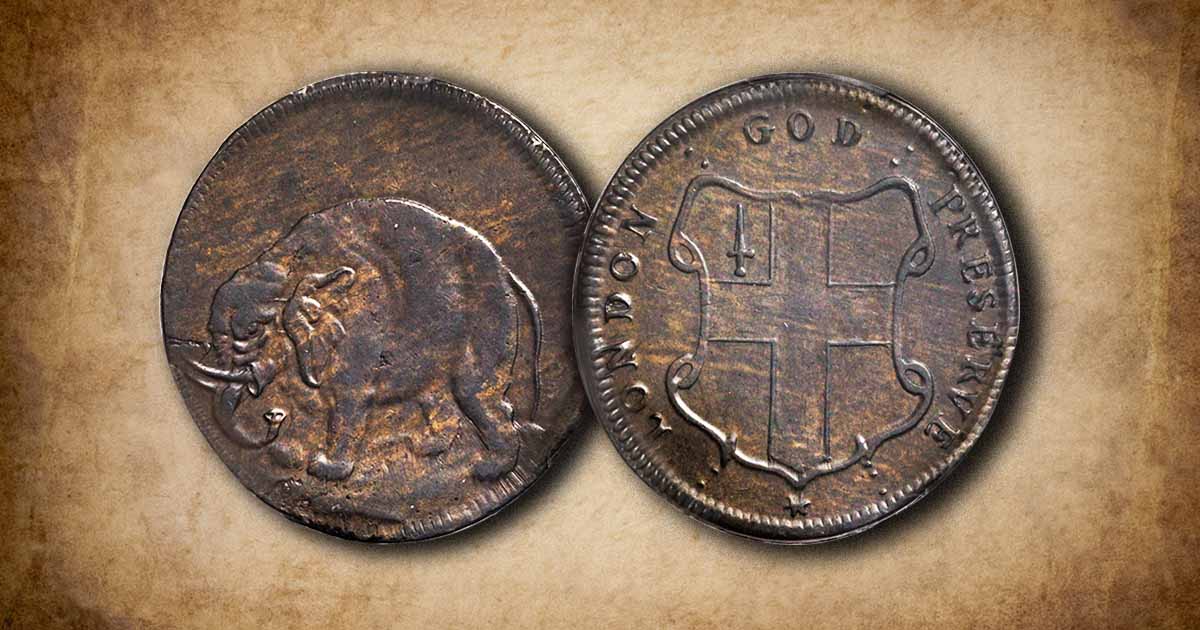
London Elephant Token – (1694)
The origin of the “London Elephant Tokens” is shrouded in mystery. The actual dates of minting may have been 1672 to 1694. These tokens bear

Kentucky Token – 1792 – 1794
These tokens are undated but were struck in England between 1792 and 1794. They are tokens that have 15 stars on them, set up in

John Chalmers Issues – 1783
John Chalmers was a Gold and Silver smith in Annapolis, Maryland. He and other merchants had a difficult time conducting business since people were reluctant
A wooden cask of about 4,000 of these “cents” was shipped to Philadelphia to be distributed to members of Washington’s cabinet as well as United States Senators and Congressmen. This was done in hope of impressing these gentlemen and securing a contract to mint large enough quantities to be distributed across the country.
Very little is known about the undated Washington “Success” tokens beyond a description of the pieces themselves. The obverse contains a bust-right portrait with the legend GEORGE WASHINGTON while the reverse depicts the Eye of Providence with fifteen long rays and a field of fifteen stars surrounded by the legend SUCCESS TO THE UNITED STATES.
Much like the Washington Cents of 1791 and 1792, the Getz Patterns were struck by an outside contractor in hopes of establishing themselves as the possible official coinage of the new American Government. Robert Morris, head of the United States Senate Committee on coinage, hired engraver Peter Getz to strike coinage to his specifications.
The 1792 United States Pattern coinage is probably the most important pattern coin as they were the precursors to the regular coinage that was to follow in the years to come. These coins were the basis for the United States monetary system, during its infancy, which became the world standard for coinage.
The medal commemorated the victory of Admiral Lord Richard Howe over American colonists in Rhode Island. During the summer of 1778, the American Major General
In order to pay its troops for the costs of the French and Indian Wars, Parliament imposed stamp tariffs on the colonies on everything they
There are four major designs for the Nova Eborac coppers. All of these coins share an obverse portrait of a mailed bust wearing a laurel
Since there was a lack of enthusiasm for these coins, they struck only one of each design, except that there are two of the same
In 1783, Robert Morris employed a British engraver to create a set of American coins for national usage. The coins were silver patterns and were
The majority of these tokens are holed for suspension, as they were worn around the hunter or trapper’s neck for safekeeping. They were also worn,
The North American Token of 1781 is like a number of colonial coins. It is a mystery as to who struck these tokens and why.
The “New Yorke in America” undated colonial coin is a Farthing or Halfpenny intended for use in the New York colony. This token was issued
New York Copper coins are some of the rarest and most desirable of all colonials. The pattern coins and privately-minted New York coins are more
Manuel Pardo was the Spanish Governor of New Spain and after pleading with the Mexican Government hierarchy, he received permission to produce a total of
New Hampshire patriots grew tired of using British coinage. On March 13th, 1776, a joint committee of the New Hampshire legislature looked at the possibility
Much like the Carolina Elephant Halfpenny Tokens which were struck in 1694, the New England Elephant tokens have another mysterious past. No one knows for
It is unknown how many copper specimens were struck or survived. Perhaps two dozen examples of all three types of Myddleton Tokens do exist. The
While it is dated 1789 (the year of George Washington’s inauguration), it is believed to have been struck as late as 1807. It is actually
No one knows the exact origin of these pieces and whether these coins were struck as patterns, for review, comment and later striking. We will
The coinage was struck without dates and is the essence of simplicity. The mint struck three different denominations of New England coinage – Three
On October 16, 1786, an Act establishing a Mint for striking Gold, Silver and Copper coins was passed by the Massachusetts House and Senate. Then
Cecil Calvert was the second Lord Baltimore. He controlled what is now the state of Maryland and he wanted to be one of the first
The origin of the “London Elephant Tokens” is shrouded in mystery. The actual dates of minting may have been 1672 to 1694. These tokens bear
These tokens are undated but were struck in England between 1792 and 1794. They are tokens that have 15 stars on them, set up in
John Chalmers was a Gold and Silver smith in Annapolis, Maryland. He and other merchants had a difficult time conducting business since people were reluctant
Washington – Grate Token – 1793
Thomas Wyon designed a 1795 British copper Halfpenny token that utilized the bust of President Washington. It was designed for the London firm of Clark & Harris, who were exporters of and dealers in stoves and fireplace screens, also called Grates!
French Billon Coinage – 1709 – 1760
Towards the end of the 17th century, the French government, mired in a deep recession, turned to striking billon coinage. King Louis XIV created France’s billon coinage by virtue of an edict in October of 1692.
Auctori Plebis Tokens – 1787
The Auctori Plebis Token is an enigmatic colonial token. No one knows who made it, where it was struck, or if an American Merchant ordered it from a British minter. What is certain is that it circulated throughout the American Colonies.
Wood’s Hibernia Coinage – 1722 – 1724
William Wood’s copper coins were heavier than those copper coins already in use, they were in demand and that would continue. In fact, had he produced all that he had permission to strike, he would have lost money over the period of time it would have taken him to fulfill that contract.
Washington President – Born VA – 1792
It was long believed that the same British minter, W. and Alexander Walker had also struck, in 1792, before the news of Washington’s disapproval, coins with the same Washington President obverse but these had a legend on the reverse instead of an eagle.
Washington Cents – 1792
4,000 of these coins were sent to the United States and distributed to Washington, his cabinet members, Senators and Congressmen, and other important officials. Washington said an emphatic NO and these coins would not be ordered.
Washington Cent -1791
A wooden cask of about 4,000 of these “cents” was shipped to Philadelphia to be distributed to members of Washington’s cabinet as well as United States Senators and Congressmen. This was done in hope of impressing these gentlemen and securing a contract to mint large enough quantities to be distributed across the country.
Washington – Unity States Token – 1783
By the middle of the 19th Century, this Unity States token was still in circulation in many of the original colonies of the United States. These tokens and all foreign coins became worthless and unacceptable as payment for any debts by the adoption of the Coinage Act of 1857.
Washington – Ugly Head Satirical Token – 1784
This very rare token was named the “Washington the Great” token but is called the “Ugly Head” because the designer had no idea of what Washington looked like. Some experts speculated that this might have been a satirical piece rather than one to honor Washington.
Washington – Success Medals
Very little is known about the undated Washington “Success” tokens beyond a description of the pieces themselves. The obverse contains a bust-right portrait with the legend GEORGE WASHINGTON while the reverse depicts the Eye of Providence with fifteen long rays and a field of fifteen stars surrounded by the legend SUCCESS TO THE UNITED STATES.
Washington – North Wales Halfpenny – 1795
It is believed that these tokens were also minted in Birmingham, England, by William Lutwyche. Although it also features a portrait of George Washington, in a military coat, facing left, it is an undated and undenominated piece.
Washington – Liberty and Security Tokens – 1795
There are two different types of Liberty and Security Tokens and several variations of each making for approximately seven distinct different Tokens. The first token, designed by Thomas Wyon, is undated and features a military bust of George Washington, facing right.
Washington – Getz Patterns – 1792
Much like the Washington Cents of 1791 and 1792, the Getz Patterns were struck by an outside contractor in hopes of establishing themselves as the possible official coinage of the new American Government. Robert Morris, head of the United States Senate Committee on coinage, hired engraver Peter Getz to strike coinage to his specifications.
Washington – Double Head Cent – (Undated)
A popular Washington Colonial Token is the “Double-Head” Token. This copper token is undated but even though it was struck in the 1820 – the 1840s, it is collected with colonial coins.
Virginia Halfpennies – 1773 – 1774
The 1609 Royal Charter allowed the Colony of Virginia to mint coinage for their uses. After 160 years, the Virginia Assembly authorized the striking of a Halfpenny in 1773 from the Tower of London Mint.
Theatre at New York – 1797
As few as a dozen New York Theater tokens were struck in proof. Skidmore created these “on speculation” and had hoped to obtain a contract from a prosperous New York business to design and strike a series or quantity of tokens for them.
Talbot, Allum & Lee Cents – 1794 – 1795
Talbot, Allum, and Lee commissioned Peter Kempson, who had a mining facility in Birmingham, England to strike two tons of copper tokens for their firm. They had weight and size similar to the British Half Penny to make them acceptable to merchants and customers alike.
Standish Barry 3 Pence – 1790
Standish Barry was a silversmith from Baltimore, Maryland, whose 3 Pence Silver coins are generally collected with US colonial coins. These coins are shrouded in mystery. Who is depicted on their obverse?
St. Patrick or Newby Coinage – (1646-1660)
Mark Newby was a Quaker, from Dublin, Ireland. He came to America in 1681 and settled in Camden, New Jersey. He brought to the New World a large cache of copper coins that have become known as St. Patrick coppers.
Silver Center Cent – 1792
The 1792 United States Pattern coinage is probably the most important pattern coin as they were the precursors to the regular coinage that was to follow in the years to come. These coins were the basis for the United States monetary system, during its infancy, which became the world standard for coinage.
Rosa Americana Coinage – 1722 – 1733
William Wood was the owner of numerous copper and tin mines in Great Britain. He sought and obtained a patent and then permission to strike coinage for use in the British colonies in America and also for use in Ireland.
More Guides for You
What is Bullion?
Gold, Silver, Platinum, and Palladium all come in various forms and sizes to create a variety of options for investors and collectors.
What is an Eagle?
Since the U.S. Mint’s American Eagle program began in 1986, Gold and Silver Eagles have remained a popular choice among both investors and collectors

